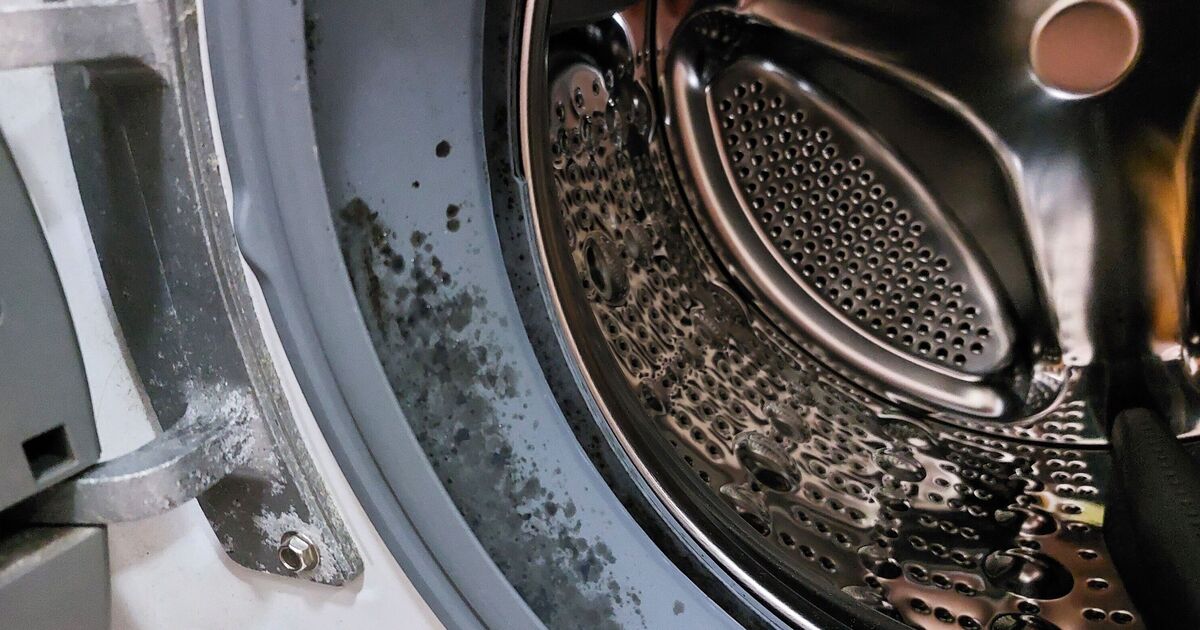Mould is drawn to washing machine seals as it’s an area that is constantly damp, especially if the washing machine is not regularly aired out or if low-temperature washes are frequently used, which may not effectively kill mould spores.
While vinegar can sometimes work on its own to remove the mould, this is on the rare occasion that you’ve caught the mould early and there is only a small amount of buildup.
If this is the case, prepare a cleaning solution by mixing equal parts of white vinegar and water. Wipe down the seal with this mixture to break down the mould.
However, for “severe mould” there is another household item that needs to be used before getting the vinegar out – bleach.
Arun Bhatoye at Hisense UK has instructed: “For severe mould, use a bleach solution (one part bleach to four parts water) to disinfect the area.
“Be sure to wear gloves and ensure the room is well-ventilated. Apply the solution, let it sit for 10 to 15 minutes, and then scrub with a brush before wiping clean with a damp cloth.”
After using bleach, run an empty hot wash cycle at 60C with a cup of vinegar or a specialised washing machine cleaner to remove any lingering mould and odours.
Once the cycle is over, leave the washing machine door slightly ajar to allow the seal to dry out. This should be done after every wash cycle.
Make sure to also wipe down the seal after every few washes to remove any water or detergent residue.
Again, running a monthly empty hot cycle with a washing machine cleaner will help prevent mould build-up.
When cleaning, in addition to the seal, pay special attention to the soap dispenser drawer.
Switch off the plug, remove the drawer fully and scrub away any soap/softener residue with a brush, then wipe with vinegar to eliminate mould regrowth.
With the drawer removed, move on to the dispenser housing. To scrub away residue in the housing, you may find a long-handled washing-up brush useful, along with a water-based detergent in a spray dispenser.
Make sure you tackle the roof of the housing as this has water spray holes which may become clogged with excess detergent, particularly if you use soap powder. Once clean, a quick spray of vinegar helps to keep it fresh.












